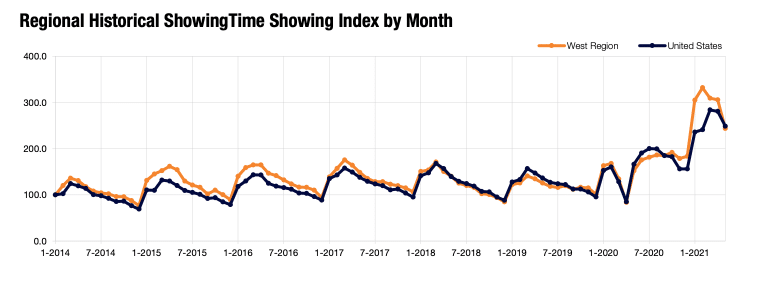This week: we have a bonus article on the state of short-term rentals (STR) in San Diego from local operator and developer, Andrew Greer. Check it out here.
But first…
Market Snapshot
We finally saw the big jump in weekly closed sales that we’ve been expecting based on the number of weekly pending sales we’ve been seeing for months.
| June 11-17 | Prev 4 Week Avg. | % Change | June 4-10 | |
|---|---|---|---|---|
| New Listings | 813 | 805 | .99% | 791 |
| New Pending Sales | 926 | 880 | 5.2% | 876 |
| New Sales | 768 | 658 | 16.81% | 680 |
| Active Inventory | 3,212 | 3,031 | 5.97% | 3,177 |
| 30 Year Fixed Mortgage | 2.93% | 2.98% | -1.51% | 2.96% |
We usually see the number of new sales jump up in the last week of a month as that’s when most closings tend to fall, but we definitely bucked that trend last week.
The bigger real estate news outlets are starting to report on what we starting talking about 6 weeks ago – the housing market is starting to show signs of cooling off.

I’m sure a lot of this has to do with buyer fatigue and affordability issues, but my guess it also has to do with the world opening back up again and people are just distracted by living their life again.
The mortgage rate data reported by FRED was deceptively low last week. It just so happens that the days in which they calculated the data for the weekly report represented the lowest rates we’ve seen in months. But that was short-lived and in fact, rates are higher now than they were a week ago.
Still, in the face of the 2nd month in a row of break-neck inflation data, mortgage rates are showing incredible resilience. This can only be explained by the Fed continuing to prop up the mortgage market with its $40 BILLION a month bond purchasing.
With prices higher than they’ve ever been, low mortgage rates are playing a huge role in still making homeownership achievable and affordable to enough buyers to keep demand up.
That’s why we’ve been paying so close attention to rates. The theory being that as mortgage rates rise we will hit some level of house payment affordability ceiling and home prices will have to adjust lower over time to compensate.
However, something to consider — which didn’t cross my mind until last week as I was replying to someone sharing a similar take on the theory above — what happens to SELLER motivation as rates go up?
Are as many sellers going to be willing to sell if they know they also have to buy in a significantly higher rate environment? Will higher rates restrict inventory even more, potentially offsetting some of the affordability issues higher rates will create?
Higher mortgage rates might only serve to drastically restrict the amount of home sales volume. That would be REALLY bad for the economy as a whole since real estate and people moving (AKA spending lots of money) is a major chunk of US GDP. Does this explain some of the Fed’s activities in the mortgage bond market?
I’m not 100% sure yet how much this dynamic would serve to hold back price declines in the event of mortgage rate increases, but I am convinced it will be a factor in some form or fashion.
In The News
- San Diego homebuilding off to a strong start in 2021.
- Relief: lumber prices down 20% from their peak.
- That big hole in the ground and the mission to turn San Diego into a life science city.
The Week Ahead
Home sale data on Tuesday and Wednesday and a key inflation reading drops on Friday.
Investors are sitting on the edge of their seats after the Feds’ recent decision to move up the timeline on raising rates.
The Fed’s official announcement said they expect to start raising in 2023, but St. Louis Fed President Jim Bullard followed up almost immediately on his own that he expect that to actually happen in 2022 based on what he’s seeing.
Needless to say, investors are looking forward (or scared out of their mind about) to multiple speaking engagements by Fed officials this week, all of which have the potential to trigger mortgage rate movements.
